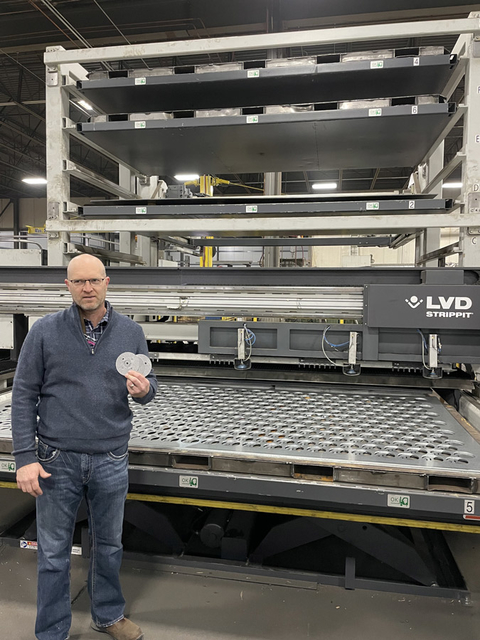“We thought companies were using automation to replace workers. However, we learned that is not the case. Companies were using automation before COVID-19 to upscale their workforce and meet consumer demands.”
—Rani Bhattacharyya
A surge in the demand for goods during the pandemic had some firms responding by adopting new automation strategies. However, many firms in Minnesota had already implemented automation strategies to help with the increased demand — quantity and quality — of products they produce.
Extension sought to learn how businesses were using automation during the pandemic. The names of 19 businesses emerged from a 2019-2020 automation training incentive program tied to the Department of Employment and Economic Development (DEED). Of those 19 businesses contacted, they interviewed seven businesses.
Extension's series of case studies highlight some key takeaways manufacturing business owners and one healthcare provider learned through their efforts. The owners also suggest a few best practices for other firms looking to adopt computerized numerical control (CNC), enterprise resource planning (ERP), cobotics, or other automation strategies in their operations.
Key takeaways and insight from businesses
Some of the key takeaways from our interviews with business owners include:
- Automation strategies were adopted by these firms to improve the quality and quantity of the product they produced — not to replace their employees.
- The use of automation in manufacturing production is heavily reliant on the skills knowledge and insight employees have in the over-production process being automated.
- Advancements in CNC, ERP and cobotics present an opportunity to include more diverse audiences in the production workforce since much of the manual labor and heavy lifting is taken over by the machines.
Other insights we gleaned from those businesses are broken into the following three groupings:
- How a roller manufacturer customized their automation strategies to fit their business growth needs.
- The use of automation as a strategy to improve consistency and timeliness of product delivery.
- The value of automation in increasing production volume to meet client needs.
- The application of stacked automation development supports continuous business growth.
- Mitigating the effects of COVID-19 with critical infrastructure sector designation.
- A robot is being purchased to help address labor shortage challenges and for cost-saving benefits.
- The value of an in-house train-the-trainer program for new equipment use.
- The value of basic production processes by employees when operating new automation equipment.
- The investment in growth mindset employees to support firm automation advancement.
- Firm establishment and growth opportunities aligned with the community’s need to retain jobs.
- Importance of communication for helping staff feel secure with changes and supporting them while going through new processes.
- The use of automation is an ongoing evolutionary process between the machines, people, and processes of a firm.
- How a dye sublimation firm vertically integrated a new laser cutter into their operations.
- Two-tiered market development with the adoption of new technology.
- The challenges and successes of a manufacturer adopting ERP software.
- The value of ERP software in scaling up operations while minimizing duplicative tasks in a workflow.
- Telehealth offerings helped save time and reduced barriers to access for the community and patients.
Get to know automating businesses
Looking to the future
In the future, research tied to workforce and automation could include employee skills, training, and usability surveys by employers. Survey information would help us better understand the needs of their existing and potential workforce in area schools.
Understanding which workforce demographic groups are currently represented in manufacturing may be another area for potential research. In a 2020 study on the state of women and girls in Minnesota, the Women’s Foundation of Minnesota found that women only made up 8% of precision production degree graduates in Minnesota. (Ewig, 2020).
Ewig, C. (2020). 2020 Status of Women & Girls in Minnesota. Center on Women, Gender, and Public Policy of the Humphrey School of Public Affairs at the University of Minnesota. St. Paul, MN.
Reviewed in 2022


